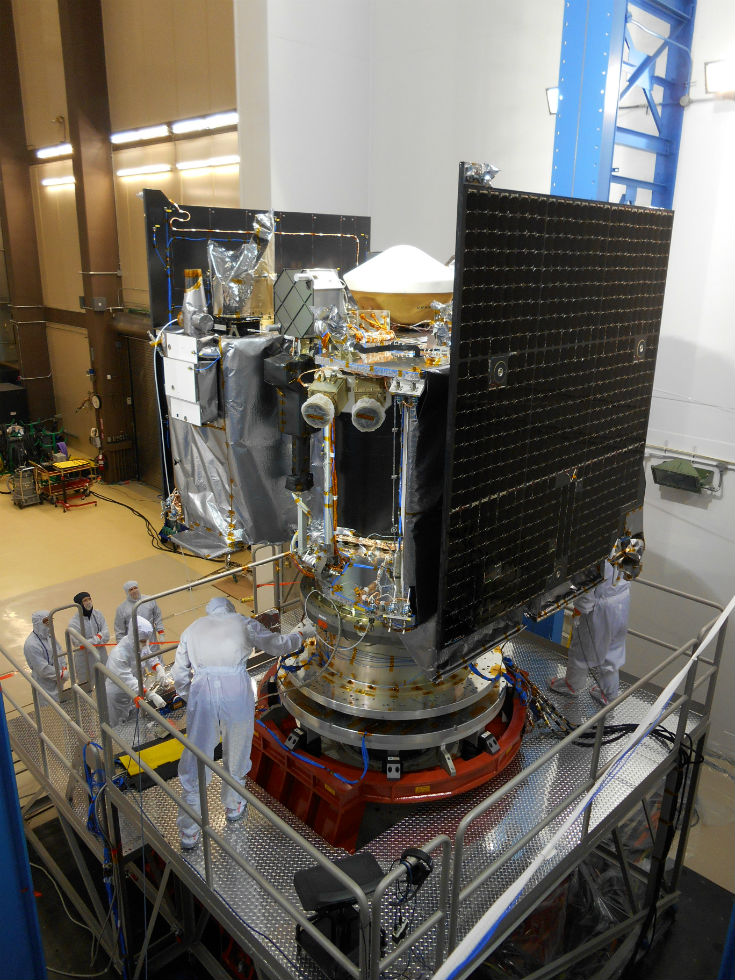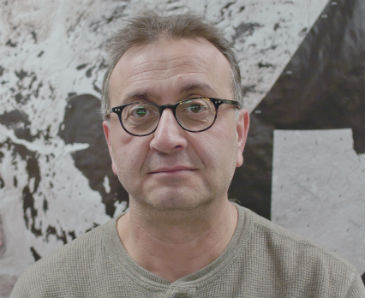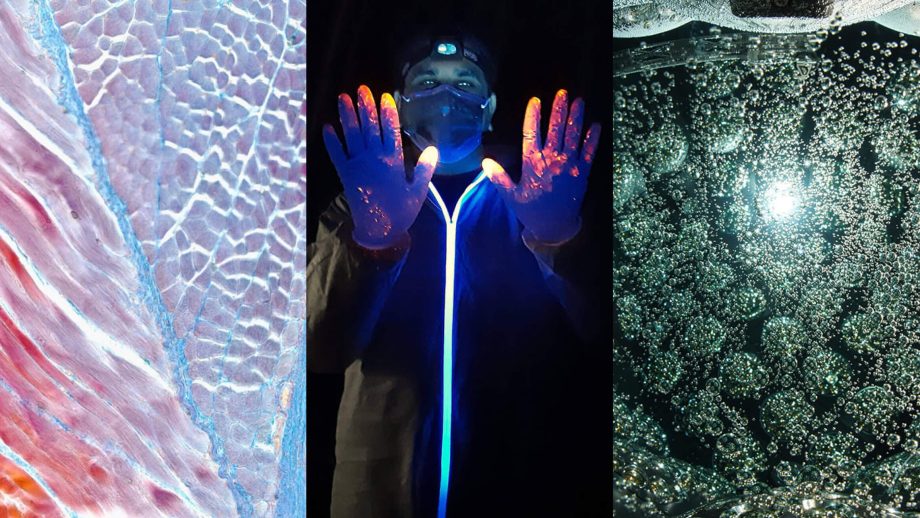
The OSIRIS-REx spacecraft sits on a fixture to undergo further testing at the Lockheed Martin facility – photo by Lockheed Martin Corporation
WINNIPEG, MB –This Thursday, NASA is launching a spacecraft from the Kennedy Space Centre in Florida that will take a seven-year round trip to collect a sample from an asteroid, and Dr. Ed Cloutis is excited. The University of Winnipeg geography professor has a key role in the mission: he’s part of the team that will select the right spot to collect a sample of the asteroid to bring back to Earth.
“This mission is significant because it will help scientists address the origin of our solar system, and where the Earth may have gotten its water,” said Cloutis. “This is the first mission in which Canada is participating that will scoop and carry samples of an asteroid back to Earth and some of that material, which looks like black rocks, will be studied in Canadian labs. ”
Dr. Ed Cloutis is available to do media interviews about the mission.
BACKGROUND
Dr. Dante Lauretta from the University of Arizona is the principal investigator. With funding from the Canadian Space Agency, five Canadian universities are participating in the OSIRIS-REx mission: the Universities of York, Calgary, Toronto, British Columbia and UWinnipeg. It is the first time Canada is part of an international mission to return a sample from an asteroid to Earth. Canada is contributing the most sophisticated lidar ever sent to an asteroid, capable of centimetre precision from up to 7 km away.
It will take two years to reach the asteroid. The spacecraft will then begin two years of comprehensive surface mapping and rehearsing the sample acquisition, which will allow the science team to pick a location from where the spacecraft’s arm will take a sample. The spacecraft hoovers up a sample in a “touch and go” landing. The mission’s objective is to collect at least two ounces of material, which will return to Earth in 2023.
The asteroid is approximately 1,900 feet (500 metres) in diameter or roughly the size of five football fields.

Dr. Ed Cloutis – photo supplied
Short Bio
Dr. Ed Cloutis is a Professor in the Department of Geography at the University of Winnipeg. He is Director of the University’s Planetary Spectrophotometer Facility: a state-of-the-art laboratory dedicated to advancing geological mapping of planetary surfaces. He is a member of the science teams associated with a number of current and future spacecraft missions, including OSIRIS-REx, the NASA-European Space Agency Dawn asteroid orbiter mission, the NASA Mars Science Laboratory Curiosity rover, and the upcoming NASA Mars 2020 rover. His work in planetary geology was recognized in 2002 with the naming of asteroid 6081 Cloutis by the International Astronomical Union.
Dr. Cloutis will be participating in public forum about the mission at the Royal Ontario Museum in Toronto on September 13, 2016.
– 30 –
MEDIA CONTACT
Diane Poulin, Senior Communications Specialist, The University of Winnipeg
P: 204.988.7135, E: d.poulin@uwinnipeg.ca




